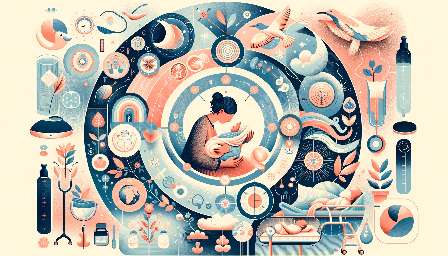Bringing a new life into the world is a remarkable and transformative experience. For expectant mothers and their loved ones, understanding the stages of labor and delivery is essential for navigating this journey with confidence and awareness. From the initial signs of labor to the final moments of childbirth, each stage brings its own set of challenges and rewards, all contributing to the miraculous process of bringing a baby into the world. Let's explore the stages of labor and delivery in detail, diving into the intricacies of each phase and offering insights for a smoother and more empowered childbirth experience.
1. Early Labor
The onset of labor is often signaled by the start of early contractions, indicating that the cervix is beginning to dilate and efface in preparation for childbirth. This phase of labor can last for varying durations, with contractions becoming more regular and intense over time. During early labor, it's crucial for expectant mothers to stay well-hydrated, practice relaxation techniques, and maintain open communication with their healthcare provider to monitor the progression of labor.
2. Active Labor
As early labor transitions into active labor, contractions intensify, and the cervix continues to dilate further, typically reaching around 6 centimeters or more. This stage is characterized by stronger and more frequent contractions, requiring expectant mothers to focus on their breathing, movement, and pain management strategies. Support from a birthing partner, doula, or healthcare team can be invaluable during this phase, as it marks the progression towards the imminent arrival of the baby.
3. Transition Phase
Transition is often considered the most challenging phase of labor, as it represents the final stretch before the pushing stage. Contractions reach their peak intensity and frequency, and the cervix fully dilates to 10 centimeters, preparing the body for the baby's descent through the birth canal. Emotionally and physically demanding, this phase requires immense strength and endurance from the birthing mother, as well as unwavering support and encouragement from her birth team.
4. Pushing Stage
Once fully dilated, the pushing stage commences, prompting the expectant mother to work with her body to actively push with each contraction, guiding the baby through the birth canal and into the world. Effective pushing techniques, such as bearing down with the contractions, are crucial during this phase, with the healthcare team providing guidance and assistance as needed. The pushing stage is a transformative and empowering experience for many women, marking the culmination of their labor efforts and the imminent arrival of their baby.
5. Delivery of the Placenta
Following the birth of the baby, the focus shifts to the delivery of the placenta, which is a vital organ that sustained the baby throughout pregnancy. This stage, also known as the third stage of labor, involves the uterus expelling the placenta and contracting to prevent excessive bleeding. Healthcare providers carefully monitor this process, ensuring that the placenta is fully expelled and that the mother's postpartum well-being is safeguarded.
6. Postpartum Recovery
After the intense and transformative experience of labor and delivery, the postpartum period offers a time for rest, recovery, and bonding with the newborn. The mother's body undergoes a remarkable transition as it begins to heal and adjust following childbirth. Embracing self-care practices, seeking support from loved ones, and accessing postpartum healthcare resources are crucial elements of this stage, enabling women to navigate the early days of motherhood with resilience and well-being.
Understanding the intricate stages of labor and delivery is essential for expectant mothers as they prepare to welcome their babies into the world. By familiarizing themselves with the unique characteristics of each phase and arming themselves with knowledge and support, women can approach childbirth with confidence, resilience, and a deep sense of empowerment.


